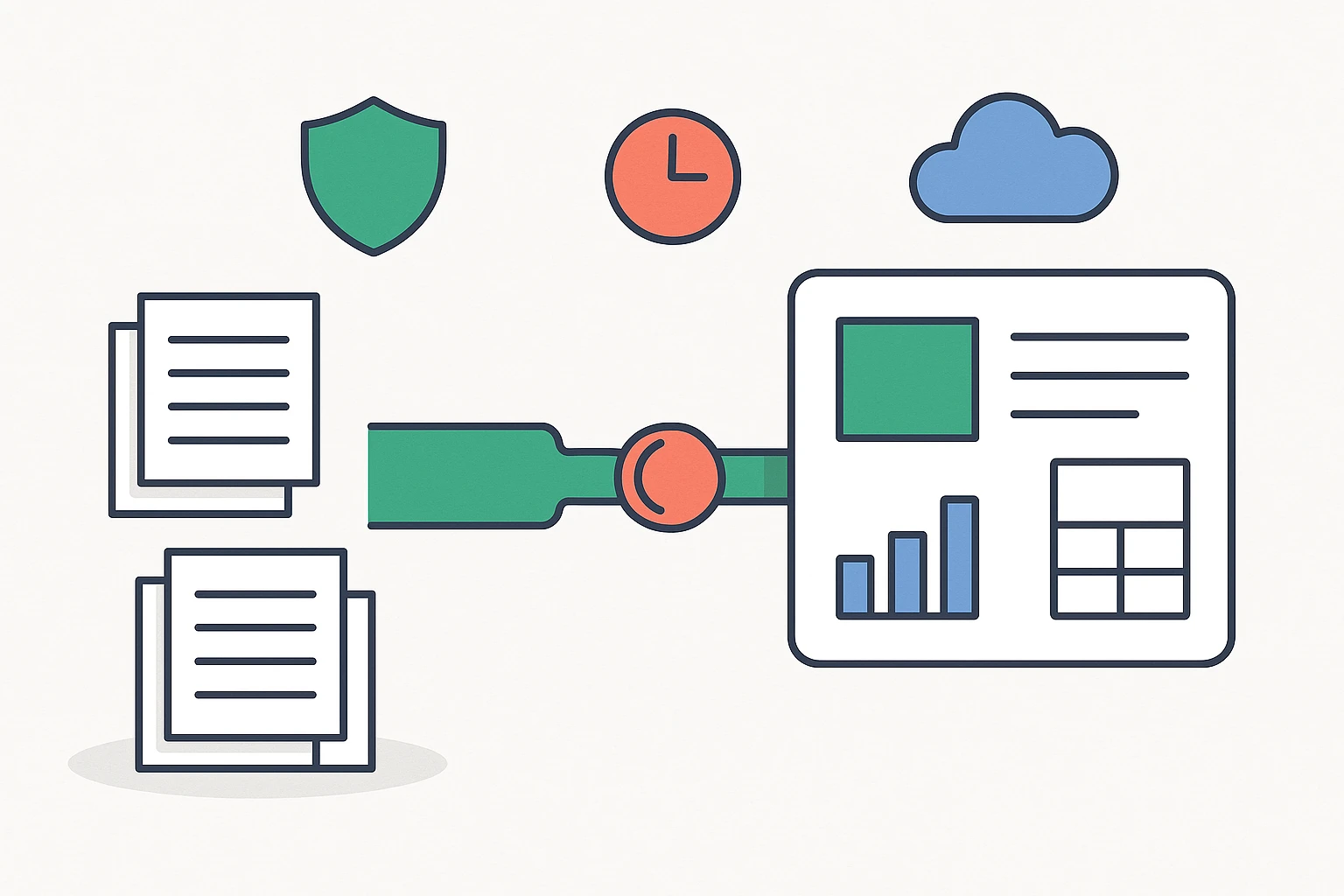The Lively Blog
SIGN UP FOR OUR
Newsletter
Stay up to date on the latest news delivered straight to your inbox
How Universal File Transfers Can Simplify Benefits Migration
Lauren Hargrave · July 22, 2025 · 7 min read

Transferring your company’s benefits to a better provider or plans that better meet your employees’ needs should be a no-brainer. But sometimes the process of transferring those benefit accounts — such as a Health Savings Account or Flexible Spending Account — gives HR teams pause. Not only can the transfer process be lengthy and require a lot of hands-on attention from HR staff, but there are also concerns about transferring employees’ data safely and securely.
Lively’s Universal File feature solves the problems that arise when transferring your benefits, taking the heavy burden off of your HR team and making the process faster and more secure. It doesn’t even require engineering resources. This is how it works.
The Problems Companies Face when Transferring Benefit Providers
Open Enrollment season gets a lot of airtime from benefits brokers, providers, administrators and HR publications. Something that is not talked about as much is the pain HR teams often experience when trying to transition their company’s beneficiaries to a new provider. The logistics can be lengthy, require lots of manpower and be risky from a data transfer perspective.
These are five common issues HR teams face when transferring benefits:
Lengthy implementation times that can last up to 12 weeks. This can result in delayed access to benefits for employees and internal pressure for administrators. There are many reasons the implementation of new benefits can take so long. The new and old benefit administration platforms might not be compatible, and payroll providers might require some hand-holding, all of which requires the HR team to engage in a lot of back-and-forth communications. Or there could be poor customer service from either provider, a complex ticketing system that causes the new provider to move slowly, or data mapping errors.
The need to involve engineering resources. Some solutions in the market involve API integrations that require technical involvement from the company’s engineering team. This could leave HR teams waiting for engineering resources to free up from other projects, which could lead to delayed implementations, and internal pressure because they’ve taken the engineers away from other valuable work.
Lots of back and forth between previous and new providers getting formatting right. Migrating benefits to new providers can require a lot of coordination between the two companies in order to get the enrollment and contribution files in the right format. If they aren’t in the right format, the new provider’s system can’t use the files.
New benefits providers are using an outdated legacy solution. Some benefits providers rely on proprietary technology to migrate employees’ benefit plans. Unfortunately, these legacy solutions often require more complex data transformation and can have a more bureaucratic ticketing process that adds weeks to the implementation timeline.
Complex, tiered organizations might not fit into a boilerplate enrollment or contribution structure. This can create headaches for HR teams as they try to migrate each plan individually.
Given the issues HR teams face when trying to transfer their companies’ benefits, it’s no wonder they are hesitant to do it. Even if the new provider better meets the company’s and employees’ needs. That’s why Lively developed its Universal File solution. To make our customers’ lives easier.
But First, What is a Universal File?
In general, a Universal File is a digital or paper file that includes all of the relevant employment information for an employee. That could include their application, offer letter, filing status, performance reviews, and other important records. When the term Universal File refers to benefits administration, it means a comprehensive electronic file or record system that includes all of the relevant information for a specific benefit or a group of beneficiaries.
So you could have a Universal File for just your Health Savings Account (HSA) beneficiaries, for beneficiaries of a singular subsidiary of a parent company, or for other specific benefit groups like Flexible Spending Accounts.
A Universal File should use a standardized format and structure to ensure consistency across all beneficiaries and plans so that errors are easy to spot and fix. A standardized format also enables authorized personnel to find the information they need quickly (because they know where to look for it).
Why is it Important for Companies to Use Universal File?
Universal File is considered the modern mechanism for benefits programs administration and employee record keeping. It streamlines the administration process and improves accessibility to employee files and enhances data security. All of the important information is in one place, formatted in a universal way, and secured, so that approved personnel can always find the information they need. This reduces the amount of time your team will spend looking for documents and getting answers to questions they have.
Universal File also comes into play when companies want to transfer their benefits plans from one provider to another. It serves as a central repository for all data related to a specific benefit or a group of beneficiaries, making it easy to transfer all of the pertinent data to a new provider at once. In addition, Universal File helps to keep the company in compliance with HIPAA and ACA regulations. Running afoul of HIPAA regulations can cost a company up to $1.5 million a year in fines.
How does Lively’s Universal File Feature Work?
To start, Lively owns the reformatting process. Previous providers redirect test file feed to Lively via SFTP. Lively coordinates with them on the technicalities and only asks company benefit administrators for assistance when absolutely necessary. Lively then uses agile integration tools for data mapping, allowing it to test and map files faster than the other Universal File type solutions in the market.
Beyond the data transfer, these features help to make transferring employees’ benefits to Lively easy, efficient and painless.
Approved individuals can correct file issues directly from the HR dashboard. The dashboard identifies the exact issues that need to be corrected (and where they are in the file) so HR team members don’t have to go hunting for the errors. Then, they can fix most problems within the Lively system so they don’t need to modify the file and resend. Instead, they can reprocess immediately.
In the rare cases when it’s not possible for a file to be corrected within the dashboard and the file must be fixed and resubmitted, administrators will receive clear information on what needs to be fixed to make that process more efficient.
Lively’s Universal File feature doesn’t have a complex ticketing system which allows our team to move faster through each implementation.
Lively can customize program design to support the needs of complex and tiered organizations. In addition, each enrollment and contribution file can contain data from multiple subsidiaries, reducing the time and effort needed to transfer each group to the new set of benefits.
HR administrators receive real-time updates on the progress of their benefits implementation, including in-product messaging and email. This helps to keep the process on-track and efficient.
Lively’s award-winning customer service is always on hand to help customers through file submission and benefit implementation.
Get Started with Lively
Lively is your partner in building a company-wide wellness culture through better benefits. We reduce stress for HR teams by shouldering much of the implementation and onboarding burden, we support employees by providing benefits that serve their needs and help them build physical and financial wellness, and we do it all with low, transparent pricing. If you’re ready to engage with the benefits of the future, contact our team today.

Benefits
2025 and 2026 Maximum HSA Contribution Limits
Lively · June 20, 2025 · 3 min read
On May 1, 2025, the IRS announced the HSA contribution limits for 2026: $4,400 for individual coverage and $8,750 for family coverage. That’s a $100–$200 increase from the 2025 limits, which are $4,300 and $8,550 respectively. If you’re 55 or older, you can still contribute an extra $1,000.

Benefits
What is the Difference Between a Flexible Spending Account and a Health Savings Account?
Lauren Hargrave · February 9, 2024 · 12 min read
A Health Savings Account (HSA) and Healthcare Flexible Spending Account (FSA) provide up to 30% savings on out-of-pocket healthcare expenses. That’s good news. Except you can’t contribute to an HSA and Healthcare FSA at the same time. So what if your employer offers both benefits? How do you choose which account type is best for you? Let’s explore the advantages of each to help you decide which wins in HSA vs FSA.

Health Savings Accounts
Ways Health Savings Account Matching Benefits Employers
Lauren Hargrave · October 13, 2023 · 7 min read
Employers need employees to adopt and engage with their benefits and one way to encourage employees to adopt and contribute to (i.e. engage with) an HSA, is for employers to match employees’ contributions.
SIGN UP FOR OUR
Newsletter
Stay up to date on the latest news delivered straight to your inbox
